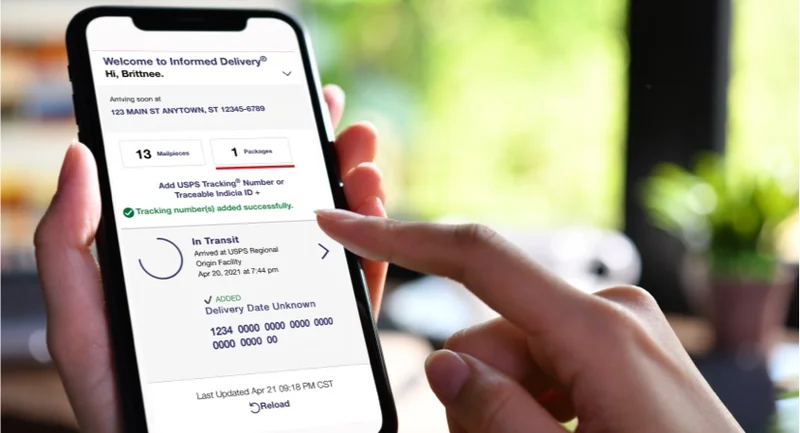The New USPS App Isn't About Your Mail. It's About Survival.
The United States Postal Service, an institution more commonly associated with paper cuts and the enduring scent of old ink, just launched a mobile app. On the surface, this is a predictable, almost mundane, development. The new app for ‘Informed Delivery’ is now live on the Apple and Google app stores, offering push notifications and enhanced package tracking. It’s a clean, modern interface for a service that already existed on the web. The press release writes itself.
But to dismiss this as a simple modernization effort is to fundamentally misread the play. This isn't about bringing a legacy service into the 21st century for your convenience. This is a calculated, strategic maneuver by a quasi-governmental entity struggling for relevance in a world dominated by Amazon Logistics and FedEx. The launch of a dedicated mobile app is not the end of a product cycle; it’s the beginning of a data-harvesting operation. And the target is the last bastion of untapped, high-fidelity consumer data: your physical mailbox.
The core service, Informed Delivery, has been around for years (it was rolled out nationwide in 2017). It’s a clever system that emails you a greyscale scan of the exterior of your incoming letter-sized mail each morning. It’s a minor convenience, a solution to a problem few people actually had. But by migrating this service from a passive daily email to an active, native mobile application, the USPS is fundamentally changing the nature of its relationship with the public. It’s shifting from a simple delivery agent to an information broker.
Why the significant capital expenditure on a native app now? A web portal is far cheaper to maintain. The answer, as it so often is, lies in the data architecture. A mobile app provides a rich, persistent, and intimate connection to the user. It allows for push notifications, location services (with permission, of course), and a far more granular understanding of user engagement than a simple website ever could. It’s the difference between sending a customer a flyer and placing a listening device in their home.
The Unspoken Asset
Let’s be precise about what’s happening here. The USPS is building one of the most powerful consumer behavior datasets in existence, and this app is its primary collection tool. Every time a user opens the app to check their mail, they generate a data point. How often do they check? What time of day? Do they engage more when a package is arriving versus just letters? This is valuable, but it’s just the surface.
The real value is in the metadata of the mail itself. The USPS knows which financial institutions are sending you mail. It knows which political campaigns are targeting your address. It sees the catalogs from retailers, the offers from insurance companies, and the bills from utilities. Until now, this information was largely ephemeral, lost the moment the mail carrier closed your mailbox lid. With the Informed Delivery app, this data becomes structured, logged, and analyzable at a massive scale. It’s a real-time map of commercial and social communication across the entire country.

And this is the part of the analysis that I find genuinely puzzling. The USPS is not a private corporation. Its mandate is to deliver mail, not to build a competing product to Google Analytics. So what is the strategic endgame? The official statements, of course, focus on "customer experience" and "innovation." But the infrastructure being built suggests something far more ambitious. Is the goal to sell anonymized trend data to marketers? To build a logistics intelligence platform to help them compete with private carriers on last-mile delivery?
The app transforms your mailbox into a node on a network. It’s an elegant piece of strategic jujitsu. The one unique, unassailable asset the USPS has is its federally mandated access to every physical address in the nation. Private companies like FedEx and UPS have to build their networks from scratch. Amazon is spending billions to replicate a fraction of this reach. The USPS already has it. This app is the mechanism to finally digitize that monopoly and extract its latent value.
A Trojan Horse in Your Pocket
The user adoption strategy is classic Silicon Valley: offer a free, convenient service to acquire users, and figure out the monetization later. The "product" is the convenience of seeing your mail on your phone. The real business model is the aggregation and analysis of the resulting data. We’ve seen this playbook run by every major tech company for the last fifteen years. It’s a bit jarring to see it executed by an entity that still uses vehicles that look like they were designed in the 1980s.
Think of the app as a Trojan horse. You download it for the simple convenience of tracking a package. In return, you grant the USPS a real-time window into your daily commercial life. The correlation between a direct mail campaign and a subsequent package delivery from the same retailer is a data point marketers would kill for. The USPS will now have this data natively. It’s a big user base—or rather, a potentially big user base. The question is whether the perceived utility is high enough to drive mass adoption.
Details on the development budget or projected user adoption rates are, unsurprisingly, not part of the public announcement. We don't know the cost per user acquisition or the lifetime value models they're running. But we can infer the strategy. It's a land grab. The goal is to get this app onto as many phones as possible, as quickly as possible, before a private competitor can offer a similar "smart mailbox" service.
What are the key metrics we should be watching? It's not just the number of downloads, which is a vanity metric. The crucial figure will be the daily active users. How many people are opening this app every single day? Is it becoming a routine, like checking email? If the USPS can achieve that level of engagement, it will have successfully converted its physical monopoly into a digital one. But what does it mean for a government-chartered service to hold that kind of behavioral data on its citizens? That's a question nobody seems to be asking.
The Real Delivery Is the Dataset
Let’s not be naive. The launch of the Informed Delivery app is the most significant strategic move the USPS has made in a generation. It’s a desperate, brilliant attempt to pivot from a declining business (first-class mail) to a growth industry (data and logistics). The convenience offered to you, the user, is simply the sugar coating on the pill. The real product isn't the digital preview of your mail; it's the digital record of your life that the app creates. This isn't about improving mail delivery. It's about ensuring the survival of the post office by turning it into a data-driven logistics powerhouse, one download at a time. The mail is just the medium; the message is the data.
